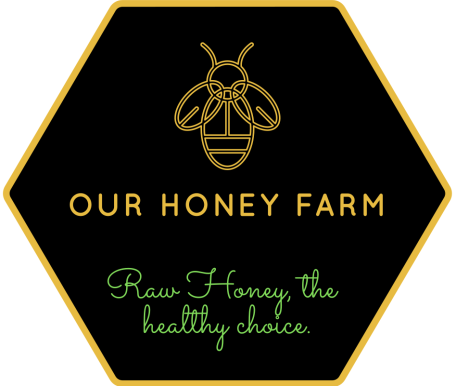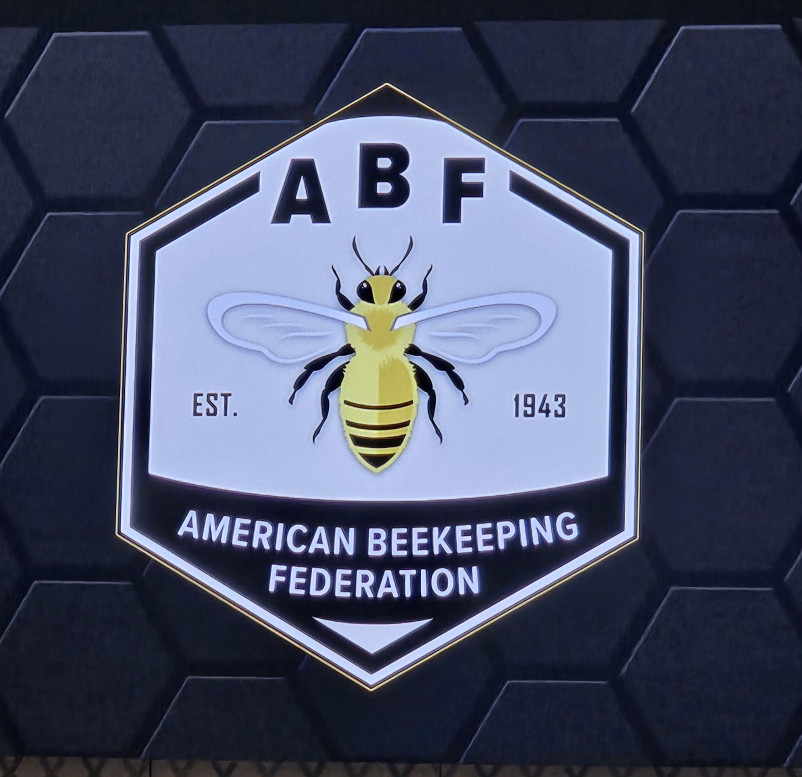
OUR HONEY FARM
APICULTURE
We have finished building our site.
Our Honey Farm page is finished. We hope to update it regularly. Please visit as often as you like. We will continue to add photos of the bees.

As you may have heard, the loss of bee hives over 2023-2024 has devastated the industry, losing 55% nationwide. The last time the losses were so high was in 2007-2008. I have heard theories of what may be the cause, but nothing definite. This year will be a rebuilding year. Thank you all for supporting your local apiary.

I started a bee club this year, so if you are interested in beekeeping or want to know more about bees. Join us at
OUR HONEY FARM / BEEHIVE CLUB on Facebook. https://www.facebook.com/groups/391117020078039/

Did you order your bees?
You still have time.

Our Services
Currently, our services are limited to our honey. Shortly, we will have farm-fresh produce. As we grow, we will continue to add more so that you and your family can enjoy. We will have eggs soon, as our chickens will be working hard to produce their best eggs,
Commonly Asked Bee Questions
Q. How long does a Queen live?
A. About five years
Q. How long does a worker bee live?
A. Up to six weeks during the summer and six months during the winter.
Q. What is raw honey?
A. Raw honey is unfiltered and has not been heated.
Note: Each apiarist treats their honey differently. They may label it as raw honey but may have filtered, heated, or thinned it out. Know your apiarist if you want to make sure your honey is raw.
Q. Do you sell organic honey?
A. In order to produce organic honey you would have to know every source that the bees are bringing back to the hive. In the United States organic honey almost doesn't exist. But we do import organic honey from other countries. You may find them at your local grocery store.
Bee Fun fact
1. A honey bee can fly up to six miles.
2. The female worker bee can sting you once, but gives up its life to protect its hive.
3. The queen can sting you many times without giving up her life.
4. The male bee cannot sting you.
5. The queen can lay as many as 2000 eggs a day.
6. Honey bees never sleep.
7. The average hive has 50,000 to 60,000 female worker bees.
8. The Male bee does not support the hive. His only job is to mate with a queen. As winter begins and he has not mated, he will be kicked out of the hive.
Bee Fun Fact
"Waggle Dance"
The waggle dance is how the bees returning to their hive give directions to the food or water source.
When preparing to swarm, the best dancer will move the swarm to the location they found for their new hive.
Swatting at bees causes them to release pheromones that call for more bees.
The honey produced by our bees is from the pollen from the following,
1. sagebrush
2. Rabbit bush
3. Desert Wildflowers
4. Flowering trees
Purple Rob Locust
Tamarix Ramosissima
Apple, snowdrift, Crabapple
Purple Leaf Plum "Thundercloud"
Shade master Locust
Sunburst (Golden) Locust
5. Russian sage
6. Alfalfa
7. Nevada wildflowers
8. The unknown
Loss of bees
Coming out of 2024, we saw the loss of more than 50% of the country's bee hives. Unfortunately, the commercial side of beekeeping was hit the hardest. This spring, these beekeepers struggle to produce the hives to pollinate the almond orchards. As for the Backyard beekeepers, some may walk away, but I believe most will struggle to rebuild.
Hopefully, they will someday find out why we lose so many hives. This is the second time we have experienced significant losses. I understand that 2007 -2008 was the first time the losses were substantial enough to be documented. 2023-2024, the losses were slightly higher and caught the public's attention.
Without the bees, we would lose the food that they pollinate.
Bee Fun Facts
Honey was found in the tombs of Egypt; it was still edible!
Bees are the only insects in the world that make food that humans can eat.
What types of bees do we have?
Saskatraz Bee
See the article on the Saskatraz bees below.
We have received questions from our customers.
Q. Do you sell honey by the gallon?
A. We are a small farm for now but will soon.
Q. Do you sell honeycomb?
A. Not yet; the hives are not set up for honeycomb production.
Q. Do you get stung a lot working with bees?
A. We have protective gear that helps prevent us from getting stung, but we do get stung once in a while.
Q. What happens to the male bee after mating?
A. The queen will kill the male bee during mating. The male bee has only one job: to mate with the queen. If he does not get the opportunity to mate with a queen, he will be evicted from the hive to save food for winter approaches.
Q. What is Honey?
A. Reference materials in the public domain define honey as “a thick, sweet, syrupy substance that bees make as food from the nectar of plants or secretions of living parts of plants and store in honeycombs.”2 FDA has concluded that this definition accurately reflects the common usage of the term “honey.”
Saskatraz Bees
Saskatraz honeybees were developed through a selective breeding program to create a robust and disease-resistant bee variety. The Saskatraz breeding program was established in Saskatchewan, Canada, and initiated in the early 21st century, with collaborators from the USDA’s Agricultural Research Service and Purdue University.
The Saskatraz bee offers several advantages for beekeepers, including high honey production, strong wintering abilities, and resistance to varroa mites. They also exhibit gentle temperament and hygienic behavior. However, like all honeybee varieties, they have potential drawbacks, such as susceptibility to certain diseases and the need for ongoing mite management. However, their resistance is noted as a significant pro.
We started supporting the Saskatraz bees at Our Honey Farm two years ago. We have had great success with them and are entering a third year in 2025. Despite the harsh winters and hot, dry summers, the Saskatraz bees have produced a large amount of honey by the end of the season. We also found no Varroa mites in any of our hives. We believe this is due to the heat in which the bees thrive and the Saskatraz's resistance to them.
If you are interested in the Saskatraz bee, please get in touch with us at customerservice@ourhoneyfarm.com
Beekeepers say catastrophic honeybee losses are cause for alarm
Honeybee officials have been raising the alarm about severe colony losses over the past few months. The extent of the bee deaths is still tallied, but one estimate suggests more than a million colonies have died.
“No one is aware of the massive nature of this year’s die-off,” said Minnesota beekeeper Steve Ellis. “It is unprecedented.”
Over the past 20 years, commercial beekeepers have often lost nearly 50 percent of their bees over the winter. But Ellis, also president of the national Pollinator Stewardship Council, said he’s hearing from beekeepers with losses ranging from 70 to 100 percent this year. One immediate repercussion is that there aren't enough bees to pollinate California’s almond crop fully.
“The almond crop will be impacted due to a shortage of bees in a way that has never happened before,” said Ellis, who takes his bees to California to pollinate almond orchards.
Earlier this month, the Almond Board of California said it was aware of “alarming reports of nationwide honeybee colony losses” as beekeepers prepared for the almond pollination season.
Honeybee organizations are collecting data to determine the extent of the losses. According to a recent news release, a voluntary online survey conducted by Project Apis m., named for the Apis mellifera honeybee, found “severe and sudden” colony losses. The nonprofit estimates that nearly 1.25 million colonies have been lost since June 2024.
“Initial survey results of colony losses suggest that commercial beekeepers may have lost more than 60 percent of their bees. The scale of these losses is completely unsustainable,” said Zac Browning, a fourth-generation commercial beekeeper from North Dakota and Project Apis m board chairman.
Researchers are collecting dead bees to look for a cause of the die-off.
Commercial beekeepers have struggled with bee losses for about 20 years since a widespread sudden die off was labeled Colony Collapse Disorder. Researchers believe pesticide exposure, loss of flowering habitat, and pathogens contributed to past losses.
In its news release, Project Apis m. said the trends of this die-off resemble past Colony Collapse Disorder events “and may impact pollination services and food security.”
Latest projects
On 09.26.2022, I started a fire break around the fence line, clearing 15 feet from the fence. Due to the many projects, this is still a work in progress.
I planted two trees in June. The trees are about 8 feet tall. 08/23 These two trees did not make it through winter.
I started clearing more land so the Bee farm had a larger area. I'm looking to have 20 hives in 2025. The larger area should support approximately 70 hives. 9/23
I have started clearing an area to prepare for next year's planting. This area will have a greenhouse for year-round growing. 1/24
I planted one more tree this month. 04/2024
I started an Island of trees, flowers, and a pond. I put goldfish in the pond for now. The water from the pond will water all the plants on the island. The bees have been using the pond as a backup water source. I do have water in each hive.
In April, I planted eight trees around the southwest corner of the Bee field. We will see how well they do this year.
Our Honey Farm
YouTube
YouTube is a learning experience for me. Please forgive my lack of commentary. I know the more videos I create, the better they will get. This is my first year, so please be patient with my beginner mistakes. Well, it's a new season, so let's see how I do.
You can find us on YouTube @ourhoneyfarm. Please ask questions.
We will do our best to give you an answer.
Don't forget to Like and follow.
